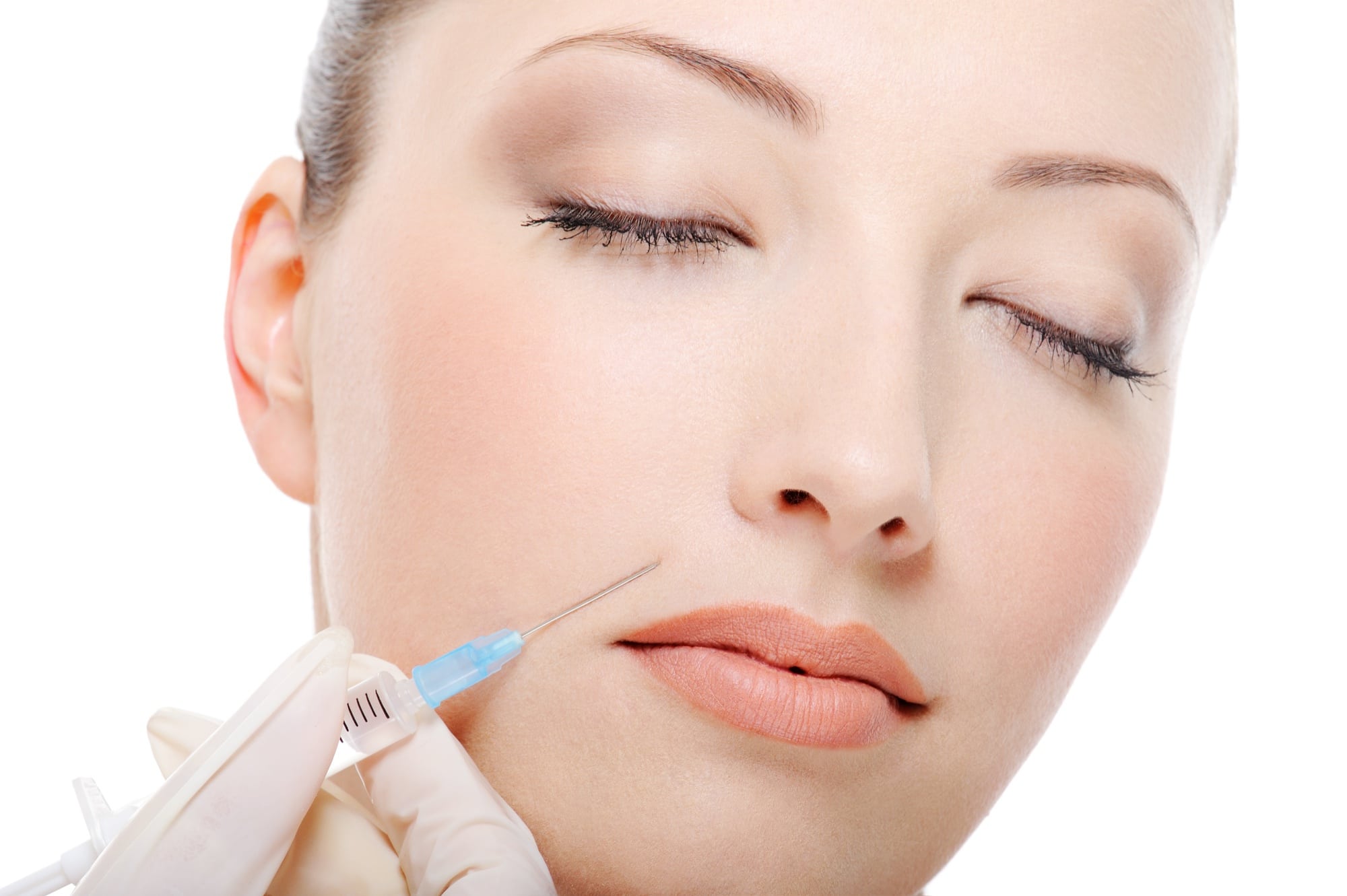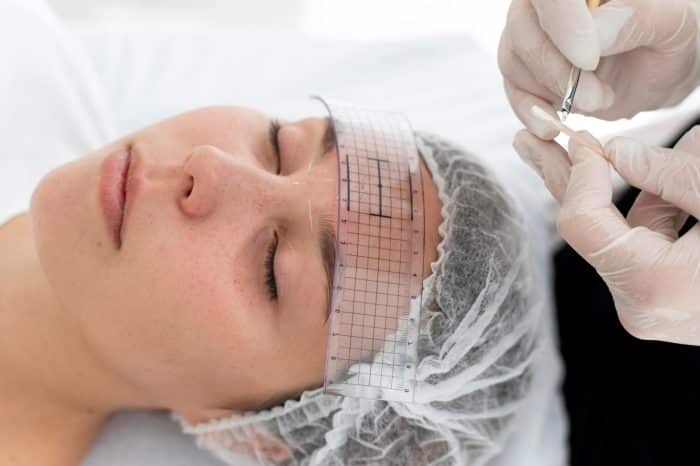
A recent study published in the Journal of Cosmetic Dermatology found that Dysport injections had an almost 90% success rate in reducing moderate to severe frown lines between the eyebrows. This minimally invasive procedure offers a popular solution for those seeking a smoother, more youthful appearance.
Dysport works similarly to Botox as a neurotoxin by temporarily paralyzing targeted muscles to reduce the appearance of creases and wrinkles. Its precision and effectiveness have solidified its reputation in non-surgical aesthetic treatments. But like any medical treatment, there is always a potential for side effects, including allergic reactions.
In this article, we will explore the signs and symptoms of allergic reactions to Dysport, discuss management strategies, and consider the long-term safety measures for patients undergoing this cosmetic procedure.
Key Takeaways
- Dysport, a type of botulinum toxin, can elicit allergic reactions in some patients.
- Recognizing the signs and symptoms of allergic reactions is crucial for prompt management.
- Understanding risk factors, potential mechanisms, and differential diagnosis is essential in evaluating patients for potential allergic responses.
- Immediate management strategies, including epinephrine administration and supportive care, are vital in addressing allergic reactions.
- Long-term considerations involve patient education, documentation of allergies, and exploring alternative treatment options.
Signs and Symptoms of Dysport Allergic Reactions
Dysport is a medication used to reduce the appearance of common signs of aging in the skin. Healthcare professionals may administer Dysport in different areas depending on what a patient wants to target. They can use Dysport for under eye wrinkles, bunny lines, and other unwanted creases on the face that can make a person look older than their actual age.
While generally safe, there is a slight chance of experiencing an allergic reaction with this cosmetic injection. Allergic reactions to Dysport can range from mild skin irritation to severe anaphylaxis. It’s essential to be aware of the signs and symptoms of an allergic reaction to Dysport so you can seek immediate medical attention if needed.
- Erythema and Skin Irritation: This side effect is also known as the redness at the injection site. Erythema usually appears alongside skin irritation, including a burning sensation, tenderness, or a rash. These symptoms are generally mild and resolve within a few days.
- Itching and Hives: Another common side effect with Dysport treatments is itching, particularly around the eyes and at the injection site. Hives may also appear as red, itchy welts on the skin and can vary in size.
- Swelling and Inflammation: Mild swelling around the injection sites is normal and usually subsides within a day or two. This swelling is generally temporary and can go down with cold compresses. However, if these reactions are severe and don’t improve within a few days, it could be a sign of an allergic reaction.
Anaphylaxis: Recognizing the Signs
Anaphylaxis is a rare but severe allergic reaction that can be life-threatening. Symptoms may include difficulty breathing, a sudden drop in blood pressure, dizziness, or a rapid heartbeat. If any of these symptoms occur, seeking emergency medical help is crucial. Other signs of a severe allergic reaction can include paralysis of facial muscles and difficulty swallowing.
Risk Factors and Potential Mechanisms

Like any medication, Dysport carries some potential risks. While uncommon, understanding the risk factors and mechanisms associated with Dysport can help ensure patient safety and treatment efficacy.
Patient History and Allergies
- Pre-existing Neuromuscular Disorders: Individuals with myasthenia gravis or Lambert-Eaton syndrome may be at a higher risk of experiencing muscle weakness after receiving Dysport. These conditions affect neuromuscular transmission, and Dysport’s mechanism of action can worsen these conditions.
- History of Allergic Reactions to Botulinum Toxin: If you have a history of allergic reactions to other botulinum toxin products, such as Botox or Daxxify, you are more likely to experience a reaction to Dysport as well. These products share similar properties and mechanisms of action. Patients must disclose any upper respiratory problems, pneumonia, or asthma history to the healthcare provider.
- General Allergies: While less common, individuals with a history of severe allergies, especially to medications or proteins, might be at a slightly higher risk of experiencing an allergic reaction to Dysport.
Immunological Response to Dysport
Dysport can trigger an immunological response upon injection, like other botulinum toxin products. The body may process the toxins and release antibodies that counteract them. Over time, with repeated injections, the effectiveness of the treatment may decrease as antibody levels rise. Dysport’s formulation, which uses fewer proteins than other botulinum toxin products, may elicit a milder immune response.
Potential Cross-Reactivity with Other Substances
Cross-reactivity refers to the immune system’s response to Dysport as if it were another substance to which the patient has sensitivity. This effect can occur due to molecular similarities between Dysport and other compounds.
While extensive cross-reactivity is rare, it’s essential to consider the patient’s exposure to other substances that may have structural similarities to botulinum toxin, as this could influence the immune response and the efficacy of the treatment.
A thorough assessment of the patient’s history and potential allergies, understanding the immunological response to Dysport, and awareness of possible cross-reactivity with other substances are crucial to minimizing risks and maximizing the benefits of Dysport treatments.
Differential Diagnosis and Patient Evaluation

When considering Dysport treatment, it’s essential to differentiate between allergic reactions and common side effects, conduct a comprehensive patient history and physical examination, and utilize appropriate diagnostic tools and tests. Here’s a look at each of these critical components:
Distinguishing Allergic Reactions from Common Side Effects
Though rare, allergic reactions to Dysport can be severe and require immediate medical attention. Symptoms such as hives, difficulty breathing, or swelling of the face and throat indicate an allergic response. On the other hand, typical side effects include mild pain, redness at the injection site, headache, and muscle weakness, which typically resolve without intervention.
Healthcare professionals must monitor patients and their progress after administration. By doing so, they can spot any signs of distress in the skin that could signal an allergic reaction.
Comprehensive Patient History and Physical Examination
Before receiving Dysport treatments, a specialist must thoroughly review the patient’s history to identify any previous allergic reactions to botulinum toxin or other allergens, as this could increase the risk of an allergic reaction to Dysport.
The physical examination should focus on targeted areas where the doctor will inject Dysport, noting any signs of infection or muscle asymmetry that could affect treatment outcomes. It’s also essential to assess the patient’s overall health status and any concurrent medications that could interact with Dysport.
Utilizing Diagnostic Tools and Tests
Additional tests might be necessary in some cases, although this is uncommon. These tests can help rule out other potential causes of a patient’s symptoms if they experience a reaction after Dysport:
- Allergy Skin Testing: While not routinely used for Dysport allergies, skin testing for botulinum toxin can be performed in rare cases to assess potential hypersensitivity.
- Blood Tests: In certain situations, a doctor might use blood tests to investigate if an underlying medical condition is causing a patient’s symptoms.
Immediate Management Strategies
A severe allergic reaction to Dysport requires immediate medical attention. Here’s a breakdown of crucial steps for managing a Dysport allergic reaction:
- Epinephrine Administration and Emergency Response: Using epinephrine is the first-line treatment for severe allergic reactions, including anaphylaxis. Emergency medical services should be called immediately after administration, especially if symptoms persist or worsen.
- Supportive Care and Monitoring: Patients need close monitoring for any progression of symptoms after getting the epinephrine shot. Supportive care, including oxygen therapy, antihistamines, intravenous fluids, and continuous observation, may be necessary until the symptoms resolve.
- Importance of Timely Intervention: Early intervention is critical in managing a Dysport allergic reaction. The sooner a patient receives medical attention, the better the chance of fully recovering and minimizing potential complications.
Long-Term Considerations and Management

Managing allergic reactions to Dysport involves immediate treatment and long-term strategies to prevent future incidents. Healthcare professionals must educate patients about potential allergic reactions to Dysport. They must know the signs and symptoms of an allergic reaction and the importance of immediate medical attention if they occur.
Healthcare providers should thoroughly document allergic reactions in the patient’s medical records, including the specifics of the response and the treatment provided. This information is vital for future healthcare providers and the patient’s knowledge.
Alternative Treatment Options and Consultation with Allergists
If a patient has a history of allergic reactions to Dysport, they may consider alternative treatments. Consultation with an allergist can provide insights into other safe and effective options. Botox or Xeomin, which contain botulinum toxin type A but have different protein structures, may be suitable alternatives.
Preventive Measures for Future Injections
For patients who have had an allergic reaction to Dysport, healthcare professionals must take preventive measures before any future injections. These measures include thoroughly evaluating the patient’s allergy history and possibly pre-treatment with antihistamines or corticosteroids to minimize the risk of another reaction.
Patients should also know the importance of informing all healthcare providers about their Dysport allergy for future treatments. They must consult a licensed doctor to discuss the best treatment plan based on their allergic reaction and desire for wrinkle-reduction treatments.
Conclusion
Recognizing and managing allergic reactions to Dysport is essential in ensuring patient safety and optimizing treatment outcomes. By empowering healthcare providers and patients with knowledge about potential responses, we can minimize complications and create a safer environment for effective wrinkle reduction.
Furthermore, ongoing research holds promise for developing even better-tolerated and more effective treatments in the future.
About: DoctorMedica is your trusted supplier of top-quality dermal fillers, viscosupplements, and more for your medical practice. If you’re looking to buy Dysport wholesale for your practice, the sales representatives at Doctor Medica can give you guidance.
FAQs
1. How quickly does Dysport work?
Dysport typically starts showing results within 2 to 3 days after treatment.
2. Can I get Dysport injections in my chin or masseter muscle?
Specialists can use Dysport injections in the chin to smooth dimples and in the masseter muscle to reduce its size for aesthetic purposes.
3. How do I know if I’m having an allergic reaction to Dysport?
Signs of an allergic reaction to Dysport include hives, difficulty breathing, swelling of your face, lips, tongue, or throat, and feeling like you might pass out.
References
Karbassi E, Nakhaee N, Zamanian M. The efficacy and complications of a new technique of Abobotulinum‐toxin A (Dysport) injection in patients with glabellar lines. Journal of Cosmetic Dermatology. 2018;18(1):55-58. doi:10.1111/jocd.12529
Krasowski MD, Siam M, Iyer M, Ekins S. Molecular similarity methods for predicting Cross-Reactivity with therapeutic drug monitoring immunoassays. Therapeutic Drug Monitoring. 2009;31(3):337-344. doi:10.1097/ftd.0b013e31819c1b83
Dysport (Injection) Uses, Dosage & Side Effects. Drugs.com. https://www.drugs.com/dysport.html
Related Articles
Joanna Carr
Restylane Product Comparison: Exploring Formulations, Indications, and Applications
The Restylane product line offers a variety of fillers tailored to different aesthetic needs and skin concerns.
Joanna Carr
Who Manufactures Ozempic?
Ozempic is manufactured by Novo Nordisk, a Danish pharmaceutical company specializing in diabetes and obesity care. Learn about their global productio...
Joanna Carr
Vabysmo Generic Name – Faricimab-svoa
Learn about Vabysmo, its generic name Faricimab-svoa, how it works, and its role in treating retinal eye conditions.


